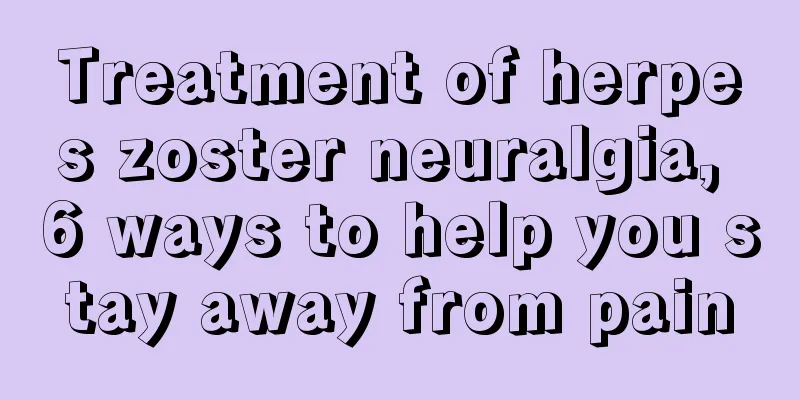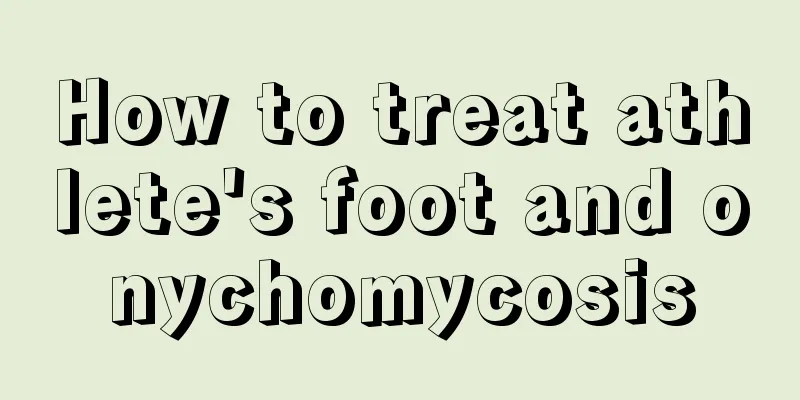Treatment of herpes zoster neuralgia, 6 ways to help you stay away from pain

|
Shingles is a skin disease with a strong hereditary nature. It often causes sequelae of neuralgia due to improper treatment or lack of rest. So how can the neuralgia caused by shingles be treated to keep patients away from pain? Medication is essential. 1. Medication The first-line drugs recommended internationally for the treatment of postherpetic neuralgia are: gabapentin, pregabalin, etc. Gabapentin, pregabalin, etc. are anti-epileptic drugs similar to carbamazepine, but their side effects are significantly less than those of drugs such as carbamazepine. If you take gabapentin or pregabalin for more than three months, you need to have your liver and kidney function checked regularly, as well as your blood routine, to avoid bone marrow suppression. Analgesics such as tramadol are also commonly used drugs for the treatment of postherpetic neuralgia, and are often used in combination with gabapentin, pregabalin, etc. Other commonly used drugs include antidepressants, hormones, non-steroidal analgesics and anti-inflammatory drugs, local anesthetic patches, etc. Drug treatment can significantly relieve patients' pain symptoms, and some patients only need drug treatment. However, for patients with refractory postherpetic neuralgia, drug treatment can only relieve symptoms but cannot control the outbreak pain of postherpetic neuralgia. For patients with refractory postherpetic neuralgia, other treatments are needed in addition to drug therapy. 2. Nerve Block Nerve blocks are somewhat effective in controlling the breakthrough pain of postherpetic neuralgia, especially in the early stages of postherpetic neuralgia. Commonly used nerve block methods include epidural block, nerve trunk block, paravertebral block, etc. A nerve block takes some time to complete, usually about two weeks. 3. Intradermal Injection Intradermal injections of drugs such as botulinum toxin also have a certain effect, especially for the skin friction pain of postherpetic neuralgia. 4. Nerve damage If some patients still cannot control pain after the above treatments, nerve destruction treatment may be considered. Postherpetic neuralgia often occurs in the chest, ribs, back and face. If the sensory nerve damage in these areas is well controlled, it will not seriously affect the patient's other functions, so nerve damage can be considered. There are two ways of nerve destruction: chemical destruction and radiofrequency destruction. Chemical ablation is now rarely used due to its poor controllability, while radio frequency ablation is more commonly used because it is better controllable and therefore safer. It should be pointed out that due to the involvement of important parts and the invisible nerves, chest and back nerve destruction is not as simple as we think. The success rate is 50-60%, while the success rate of facial nerve destruction is higher, at more than 90%. However, for postherpetic neuralgia in other parts of the body, such as postherpetic neuralgia in the limbs, it is not appropriate to use nerve destruction to treat it. 5. Spinal Cord Stimulation After the above treatment, 90% of patients can significantly reduce pain and can control the pain by continuing to take medication. However, the above treatments are still ineffective for about 10% of patients. Spinal cord stimulation may be considered at this time. Spinal cord stimulation is a method of treating clinically intractable and refractory pain by implanting electrodes into the spinal canal and using pulsed current stimulation to mask pain stimuli. For patients with postherpetic neuralgia who have not responded to the above methods, spinal cord stimulation therapy can be considered. 6. Others Other methods include transcutaneous electrical nerve stimulation. In short, postherpetic neuralgia is a very difficult to treat neuropathic pain. Through the above-mentioned comprehensive treatment, the pain of most patients can be controlled to an acceptable level so that it does not affect the patient's normal life. The Pain Department of Wuhan No. 1 Hospital has accumulated rich experience in the treatment of various refractory postherpetic neuralgia and has won high praise from patients. |
<<: What causes shingles? It turns out to be like this
Recommend
Eyes are becoming more and more sensitive to light
Most people will feel photophobia and discomfort ...
How to detect pituitary tumors and what tests should be done
Because pituitary tumors can cause a variety of c...
Six Misconceptions About Cooling Off the Heat in Summer
The weather is hot in summer, and people like to ...
Can green onions and anti-inflammatory food be eaten at the same time
The green onion plant is quite common in our live...
Is a positive gastric insufflation result serious?
When you go to the hospital for a check-up due to...
What harm does bile duct cancer bring
What harm does bile duct cancer bring? The emerge...
How to prevent lung cancer in daily life? There are four main types of lung cancer
Due to the rapid industrial development, our envi...
How heritable is glioma
Modern people say that if you have any disease, e...
The dangers of applying skin care products at night
As social and life pressures continue to increase...
What fruit is good for the heart
With the development of the economy, more and mor...
What medicine to take to treat cerebral thrombosis
Cerebral thrombosis is a very serious problem. If...
What should I do if my vocal cords are swollen
The swollen vocal cords are likely to be caused b...
What to do if breast cancer patients have joint pain after taking trometazoline tablets?
What should I do if I suffer from joint pain afte...
Differential diagnosis of cervical cancer
In recent years, cervical cancer has become one o...
In my 20s, I have joint pain, headache, and chest tightness
Although symptoms such as joint pain are very com...









